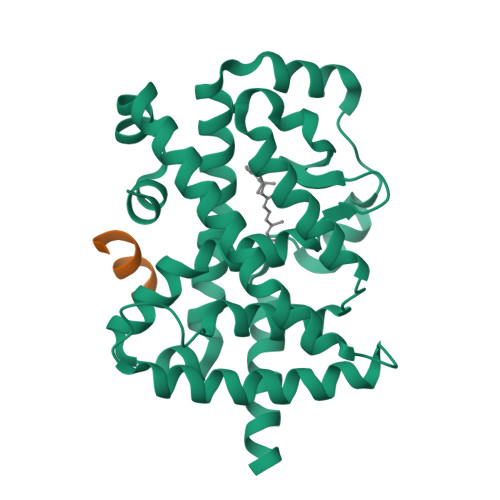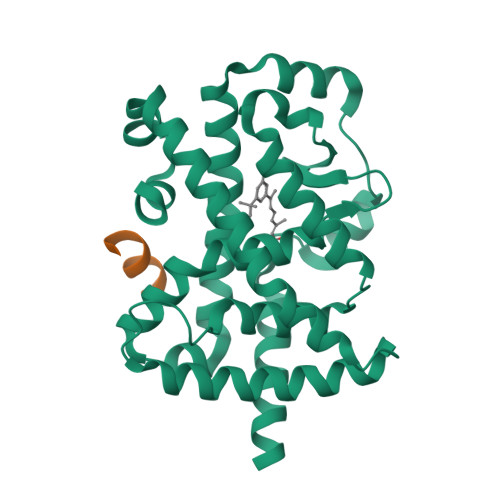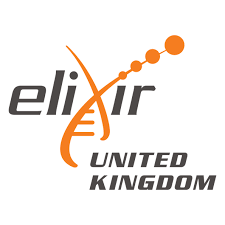RAR-related orphan receptor-β
Target id: 599
Nomenclature: RAR-related orphan receptor-β
Systematic Nomenclature: NR1F2
Contents:
- Gene and Protein Information
- Previous and Unofficial Names
- Database Links
- Selected 3D Structures
- Natural/Endogenous Ligands
- Agonists
- Antagonists
- DNA Binding
- Co-binding Partners
- Main Co-regulators
- Main Target Genes
- Tissue Distribution
- Physiological Consequences of Altering Gene Expression
- Phenotypes, Alleles and Disease Models
- Biologically Significant Variants
- General Comments
- References
- Contributors
- How to cite this page
Gene and Protein Information  |
|||||
| Species | AA | Chromosomal Location | Gene Symbol | Gene Name | Reference |
| Human | 470 | 9q21.13 | RORB | RAR related orphan receptor B | 5 |
| Mouse | 470 | 19 B | Rorb | RAR-related orphan receptor beta | 14 |
| Rat | 470 | 1q43 | Rorb | RAR-related orphan receptor B | 3 |
Database Links  |
|
| Alphafold | Q92753 (Hs), Q8R1B8 (Mm), P45446 (Rn) |
| CATH/Gene3D | 3.30.50.10 |
| ChEMBL Target | CHEMBL3091268 (Hs), CHEMBL4105721 (Rn) |
| Ensembl Gene | ENSG00000198963 (Hs), ENSMUSG00000036192 (Mm), ENSRNOG00000013413 (Rn) |
| Entrez Gene | 6096 (Hs), 225998 (Mm), 309288 (Rn) |
| Human Protein Atlas | ENSG00000198963 (Hs) |
| KEGG Gene | hsa:6096 (Hs), mmu:225998 (Mm), rno:309288 (Rn) |
| OMIM | 601972 (Hs) |
| Pharos | Q92753 (Hs) |
| RefSeq Nucleotide | NM_006914 (Hs), NM_001289921 (Mm), NM_001043354 (Mm), NM_146095 (Mm), NM_001270958 (Rn) |
| RefSeq Protein | NP_008845 (Hs), NP_001276850 (Mm), NP_001036819 (Mm), NP_666207 (Mm), NP_001257887 (Rn) |
| UniProtKB | Q92753 (Hs), Q8R1B8 (Mm), P45446 (Rn) |
| Wikipedia | RORB (Hs) |
Selected 3D Structures  |
|||||||||||||

|
|
||||||||||||

|
|
||||||||||||
Natural/Endogenous Ligands  |
| tretinoin |
Download all structure-activity data for this target as a CSV file 
Agonists  |
|||||||||||||||||||||||||||||||||||||||||||||||||||||||||||||||||||||||||||||||||||
| Key to terms and symbols | View all chemical structures | Click column headers to sort | |||||||||||||||||||||||||||||||||||||||||||||||||||||||||||||||||||||||||||||||||
|
|||||||||||||||||||||||||||||||||||||||||||||||||||||||||||||||||||||||||||||||||||
Antagonists  |
|||||||||||||||||||||||||||||||||||||||||||||||||||||||||||||||||||||||||||||||||||||||||||||||||||||||||||||||||||||||||||||||||||||||||||||||||||||||||||||||||||||||||||||||||||||||||||||||||||||||||||||||||||
| Key to terms and symbols | View all chemical structures | Click column headers to sort | |||||||||||||||||||||||||||||||||||||||||||||||||||||||||||||||||||||||||||||||||||||||||||||||||||||||||||||||||||||||||||||||||||||||||||||||||||||||||||||||||||||||||||||||||||||||||||||||||||||||||||||||||
|
|||||||||||||||||||||||||||||||||||||||||||||||||||||||||||||||||||||||||||||||||||||||||||||||||||||||||||||||||||||||||||||||||||||||||||||||||||||||||||||||||||||||||||||||||||||||||||||||||||||||||||||||||||
| Antagonist Comments | |||||||||||||||||||||||||||||||||||||||||||||||||||||||||||||||||||||||||||||||||||||||||||||||||||||||||||||||||||||||||||||||||||||||||||||||||||||||||||||||||||||||||||||||||||||||||||||||||||||||||||||||||||
| A recent study identified all trans retinoic acid, its 4-oxo metabolites and one of its synthetic analogues (ALRT 1550) as bona fide ligand for RORβ. Interestingly, this study show that binding of these ligands to RORβ LBD results in a decrease of its transcriptional activity. The values given here represent the IC50 of the substance in a functional assay based on inhibition of RORβ activity in a reporter assay in HT22 cells. The in vivo relevance of these data is still unclear. | |||||||||||||||||||||||||||||||||||||||||||||||||||||||||||||||||||||||||||||||||||||||||||||||||||||||||||||||||||||||||||||||||||||||||||||||||||||||||||||||||||||||||||||||||||||||||||||||||||||||||||||||||||
Co-binding Partners  |
|||
| Name | Interaction | Effect | Reference |
| Nm23-2 | Physical | 10 | |
Main Co-regulators  |
||||||
| Name | Activity | Specific | Ligand dependent | AF-2 dependent | Comments | References |
| NCOR1 | Co-repressor | Yes | Yes | Yes | 9 | |
| NRIP2 | Co-repressor | No | No | Yes | 6 | |
| NCOR1 | Co-activator | No | No | Yes | 12 | |
| Main Co-regulators Comments | ||||||
| NRIP2 inhibits receptor-mediated gene expression in an AF2-D-dependent manner presumably by interfering with coactivator binding. By docking to the holo-LBD of nuclear receptors, NRIP2 might displace coactivators and result in suppression of the transcriptional activity of liganded nuclear receptors. Therefore, NRIP2 might fall into the same category of coregulatory proteins such as RIP140, which is described to suppress the activation of certain agonist-bound hormone receptors. | ||||||
Main Target Genes  |
|||||
| Name | Species | Effect | Technique | Comments | References |
| ARNTL | Human | Activated | Transient transfection, EMSA, Others | ROR beta, alpha and gamma are involved in the molecular mechanism supporting the circadian pacemaker. It have been shown that the bHLH PAS protein product of ARNTL (Bmal1) expression is directly regulated by RORs and Rev erbs which compete for the same response element. | 7 |
Tissue Distribution 
|
||||||||
|
||||||||
| Tissue Distribution Comments | ||||||||
| RORβ is uniquely expressed in brain. Most of its transcripts are found as a large 10 kb mRNA species and a minor fraction is detected at 2.4 kb. In spleen a RORβ transcript of 1 kb is detected. The nature of this transcript is not known. The distribution of RORβ transcript was studied in rat both by competitive PCR and by in situ hybridisation and confirmed the specific expression in brain. Strong expression was found in pineal gland, hypothalamus, and thalamus. RORβ is also expressed in eye, spinal cord and pituitary. In eye, RORβ was shown to be expressed in retinal progenitor cells in the embryonic rat retina and to be important in regulating retinal progenitor proliferation. Interestingly, it has been shown that RORβ mRNA level oscillate along a circadian rhythm in retina and in pineal gland in mouse, consistent with a role in the regulation of circadian rhythm. | ||||||||
Physiological Consequences of Altering Gene Expression 
|
||||||||||
|
||||||||||
| Physiological Consequences of Altering Gene Expression Comments | ||||||||||
| The knock-out strain corresponds to the now lost vacillan strain. They display a typical duck-like gait, a transient inability for males to reproduce and a severe disorganisation of the retina and complete blindness. Furthermore, they exhibit a slightly abnormal circadian rhythm: although their rhythmicity is still entrained by light-dark cycle, under constant conditions they display an extended period of free-running rhythmicity suggesting that this gene influences circadian rhythm. | ||||||||||
Phenotypes, Alleles and Disease Models 
|
Mouse data from MGI | ||||||||||||||||||||||||||||||||||||||||||||||||||||||||||||||||||||||||||||||||||||||||||||||||||||||||||||
|
|||||||||||||||||||||||||||||||||||||||||||||||||||||||||||||||||||||||||||||||||||||||||||||||||||||||||||||
Biologically Significant Variants 
|
||||||||||||||
|
||||||||||||||
|
| General Comments |
| A complete review of the NR1F subfamily is [8]. |
References
1. André E, Conquet F, Steinmayr M, Stratton SC, Porciatti V, Becker-André M. (1998) Disruption of retinoid-related orphan receptor beta changes circadian behavior, causes retinal degeneration and leads to vacillans phenotype in mice. EMBO J, 17 (14): 3867-77. [PMID:9670004]
2. André E, Gawlas K, Becker-André M. (1998) A novel isoform of the orphan nuclear receptor RORbeta is specifically expressed in pineal gland and retina. Gene, 216 (2): 277-83. [PMID:9729429]
3. Becker-André M, André E, DeLamarter JF. (1993) Identification of nuclear receptor mRNAs by RT-PCR amplification of conserved zinc-finger motif sequences. Biochem Biophys Res Commun, 194 (3): 1371-9. [PMID:7916608]
4. Becker-André M, Wiesenberg I, Schaeren-Wiemers N, André E, Missbach M, Saurat JH, Carlberg C. (1994) Pineal gland hormone melatonin binds and activates an orphan of the nuclear receptor superfamily. J Biol Chem, 269 (46): 28531-4. [PMID:7961794]
5. Carlberg C, Hooft van Huijsduijnen R, Staple JK, DeLamarter JF, Becker-André M. (1994) RZRs, a new family of retinoid-related orphan receptors that function as both monomers and homodimers. Mol Endocrinol, 8 (6): 757-70. [PMID:7935491]
6. Greiner EF, Kirfel J, Greschik H, Huang D, Becker P, Kapfhammer JP, Schüle R. (2000) Differential ligand-dependent protein-protein interactions between nuclear receptors and a neuronal-specific cofactor. Proc Natl Acad Sci USA, 97 (13): 7160-5. [PMID:10860982]
7. Guillaumond F, Dardente H, Giguère V, Cermakian N. (2005) Differential control of Bmal1 circadian transcription by REV-ERB and ROR nuclear receptors. J Biol Rhythms, 20 (5): 391-403. [PMID:16267379]
8. Jetten AM. (2004) Recent advances in the mechanisms of action and physiological functions of the retinoid-related orphan receptors (RORs). Curr Drug Targets Inflamm Allergy, 3 (4): 395-412. [PMID:15584888]
9. Moraitis AN, Giguère V, Thompson CC. (2002) Novel mechanism of nuclear receptor corepressor interaction dictated by activation function 2 helix determinants. Mol Cell Biol, 22 (19): 6831-41. [PMID:12215540]
10. Paravicini G, Steinmayr M, André E, Becker-André M. (1996) The metastasis suppressor candidate nucleotide diphosphate kinase NM23 specifically interacts with members of the ROR/RZR nuclear orphan receptor subfamily. Biochem Biophys Res Commun, 227 (1): 82-7. [PMID:8858107]
11. Schaeren-Wiemers N, André E, Kapfhammer JP, Becker-André M. (1997) The expression pattern of the orphan nuclear receptor RORbeta in the developing and adult rat nervous system suggests a role in the processing of sensory information and in circadian rhythm. Eur J Neurosci, 9 (12): 2687-701. [PMID:9517474]
12. Stehlin C, Wurtz JM, Steinmetz A, Greiner E, Schüle R, Moras D, Renaud JP. (2001) X-ray structure of the orphan nuclear receptor RORbeta ligand-binding domain in the active conformation. EMBO J, 20 (21): 5822-31. [PMID:11689423]
13. Stehlin-Gaon C, Willmann D, Zeyer D, Sanglier S, Van Dorsselaer A, Renaud JP, Moras D, Schüle R. (2003) All-trans retinoic acid is a ligand for the orphan nuclear receptor ROR beta. Nat Struct Biol, 10 (10): 820-5. [PMID:12958591]
14. Strausberg RL, Feingold EA, Grouse LH, Derge JG, Klausner RD, Collins FS, Wagner L, Shenmen CM, Schuler GD, Altschul SF et al.. (2002) Generation and initial analysis of more than 15,000 full-length human and mouse cDNA sequences. Proc Natl Acad Sci USA, 99 (26): 16899-903. [PMID:12477932]
15. Zhao X, Graves C, Ames SJ, Fisher DE, Spanjaard RA. (2009) Mechanism of regulation and suppression of melanoma invasiveness by novel retinoic acid receptor-gamma target gene carbohydrate sulfotransferase 10. Cancer Res, 69 (12): 5218-25. [PMID:19470764]












